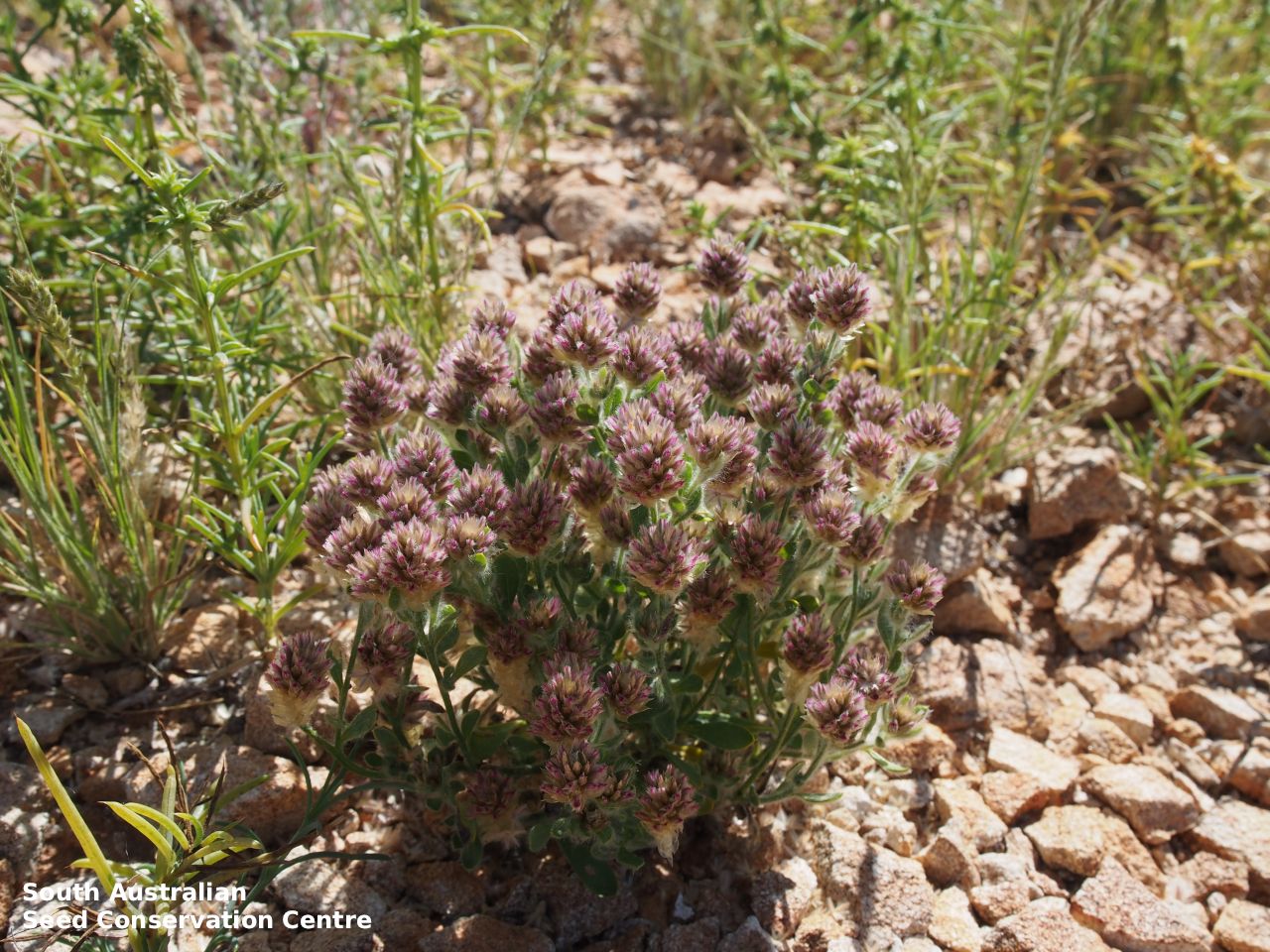
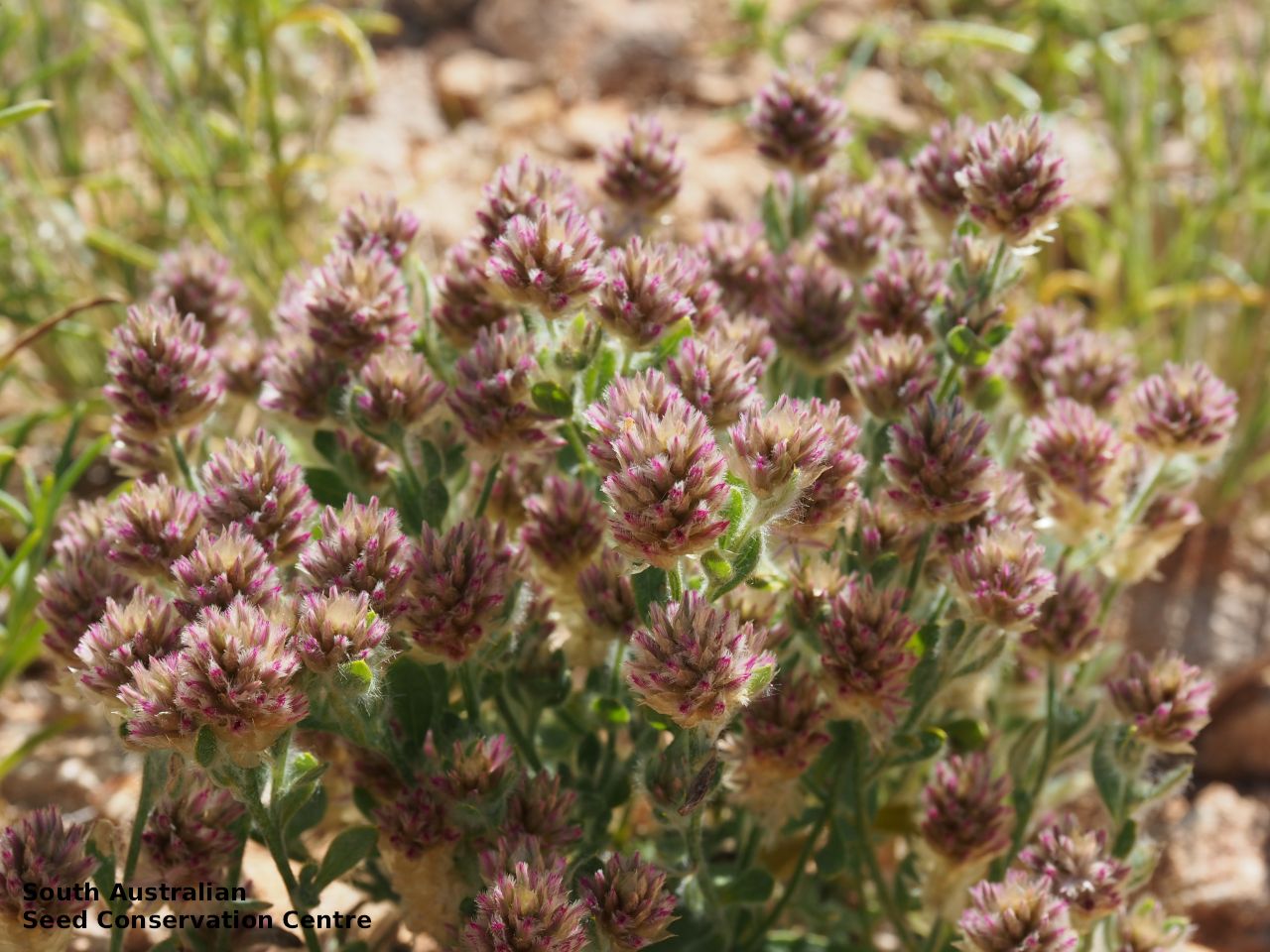
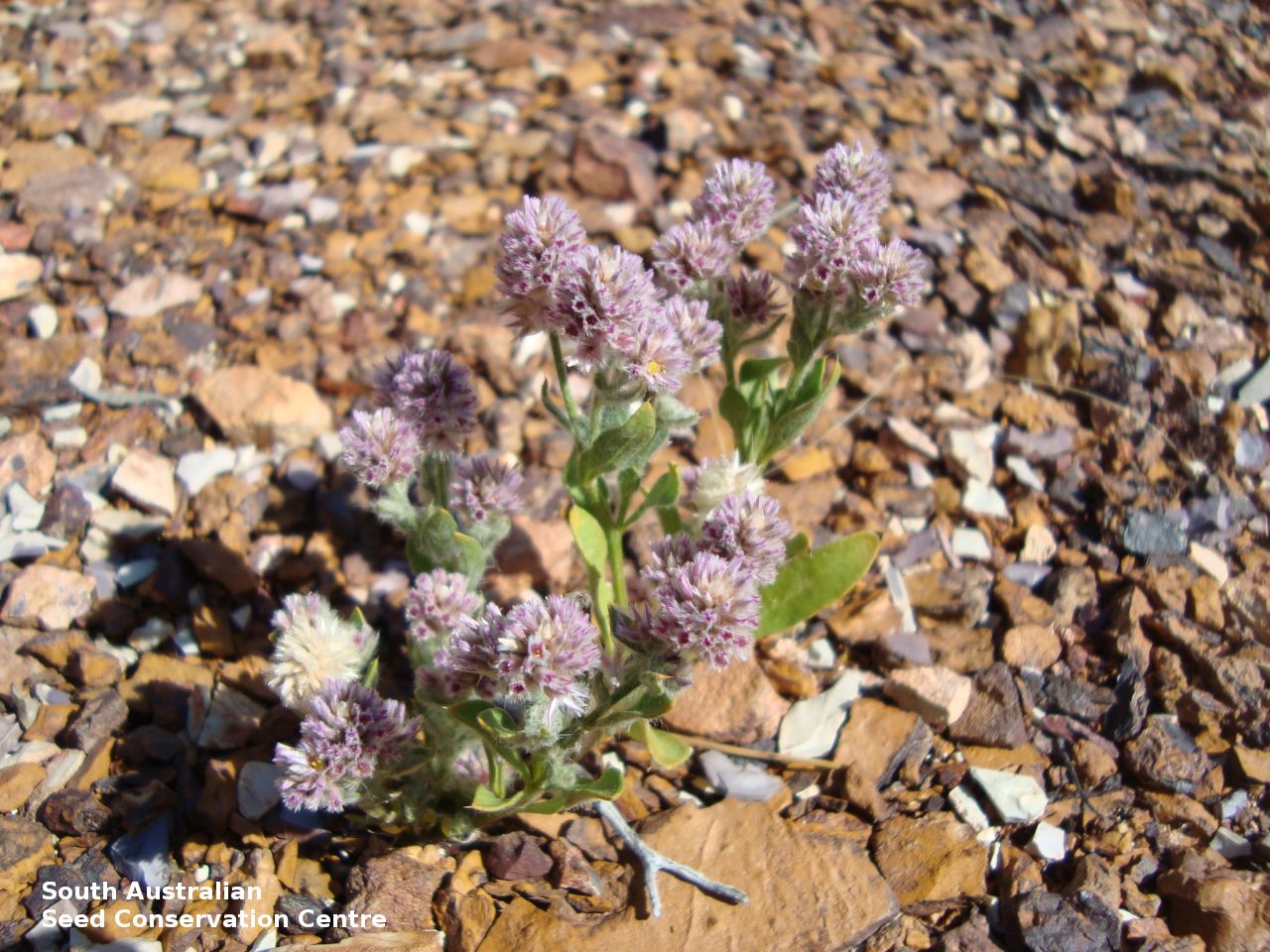


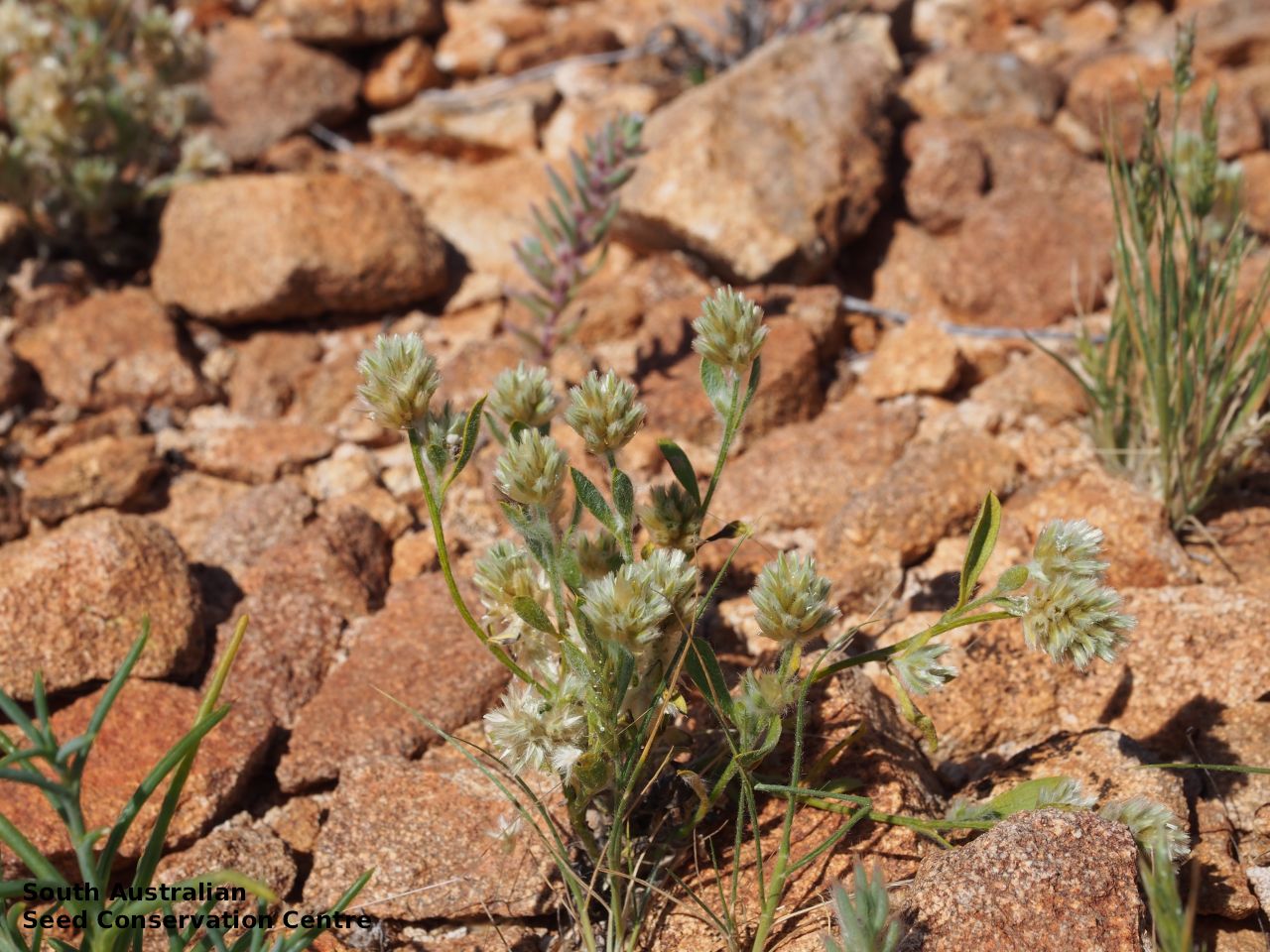
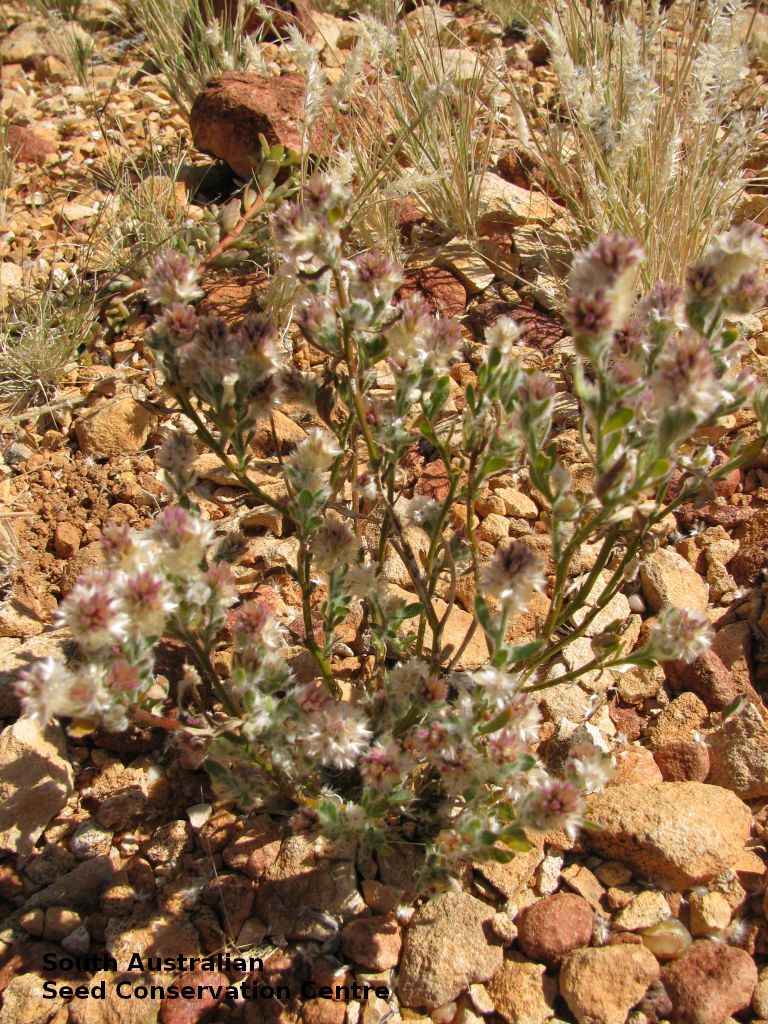
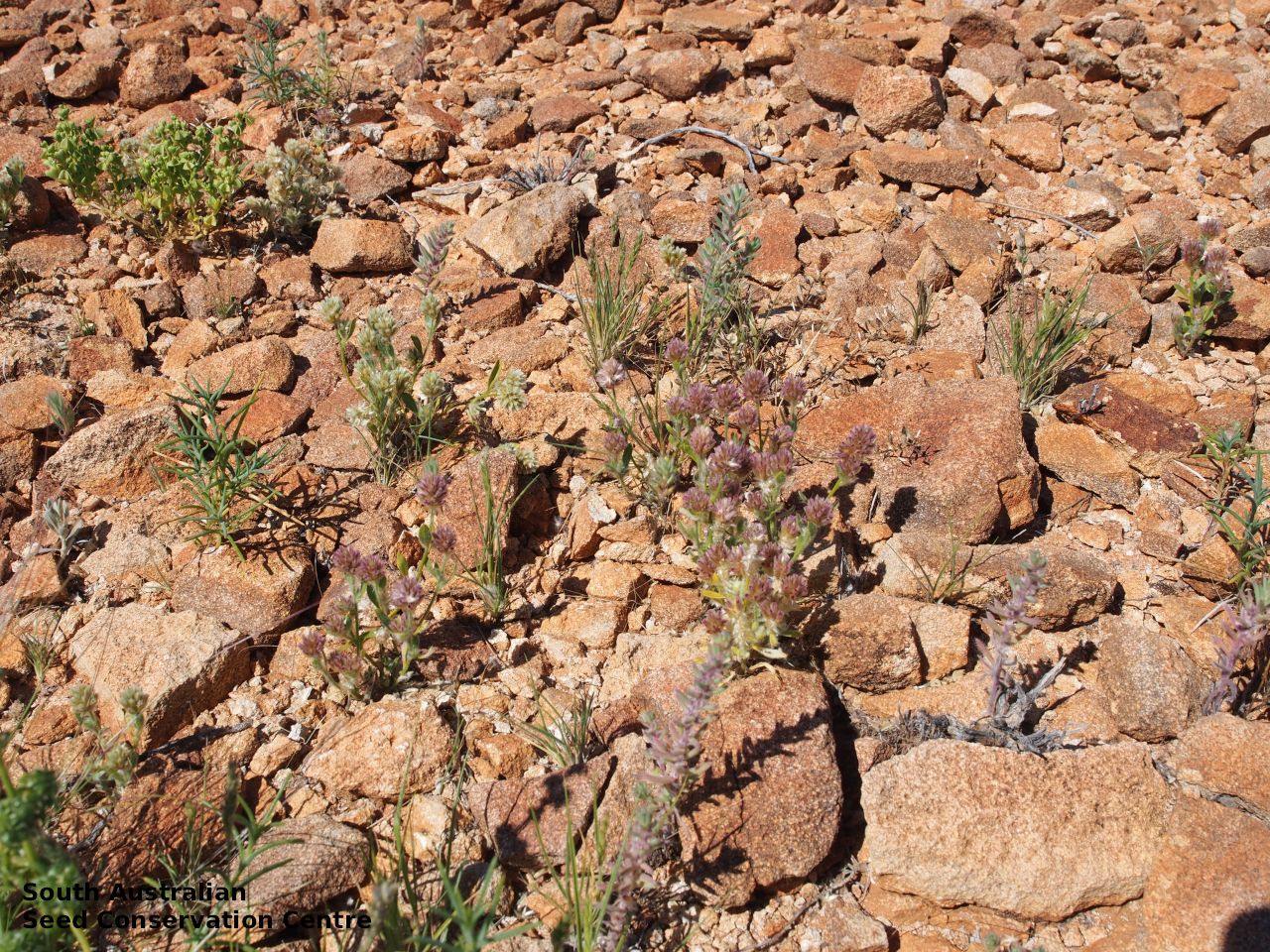
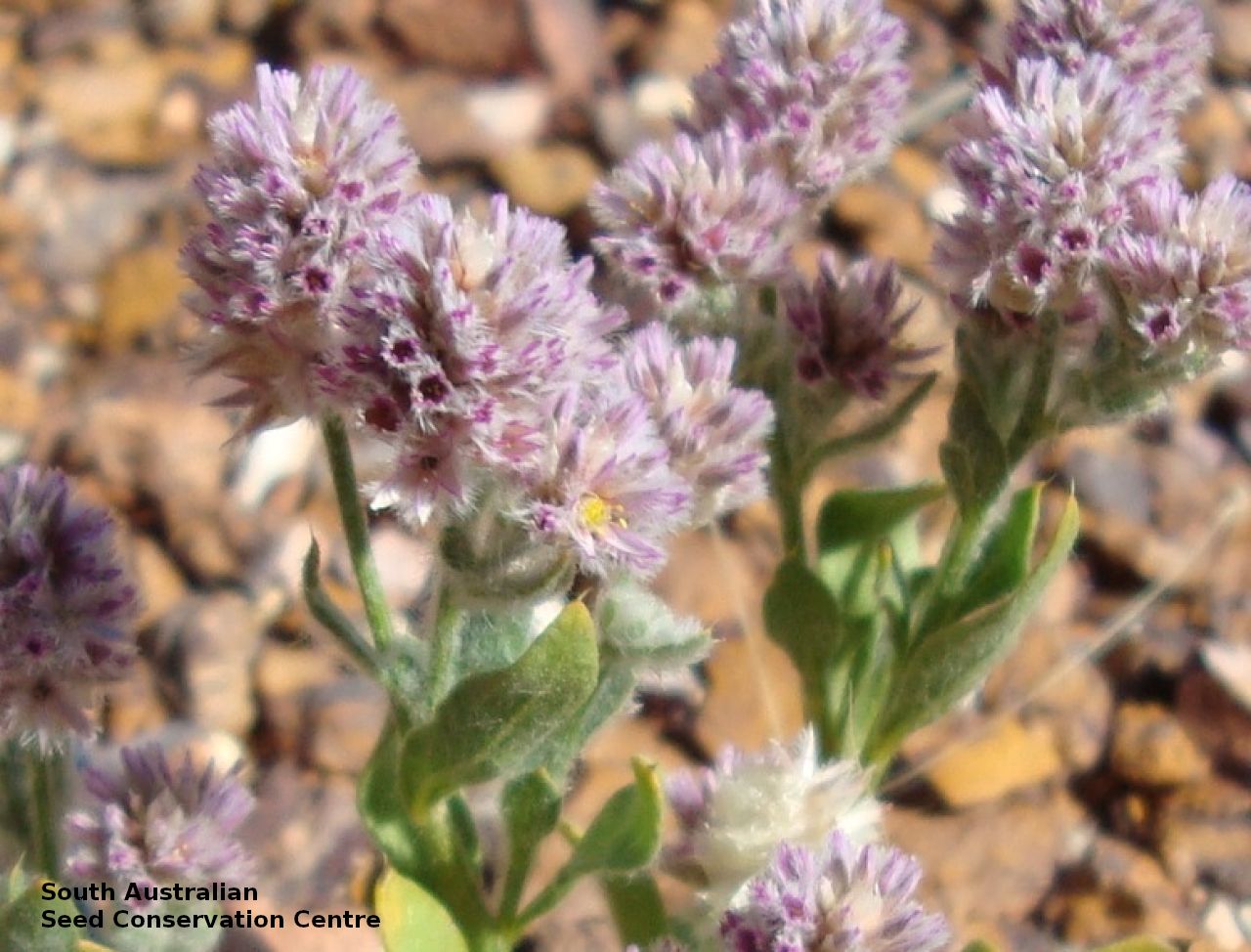
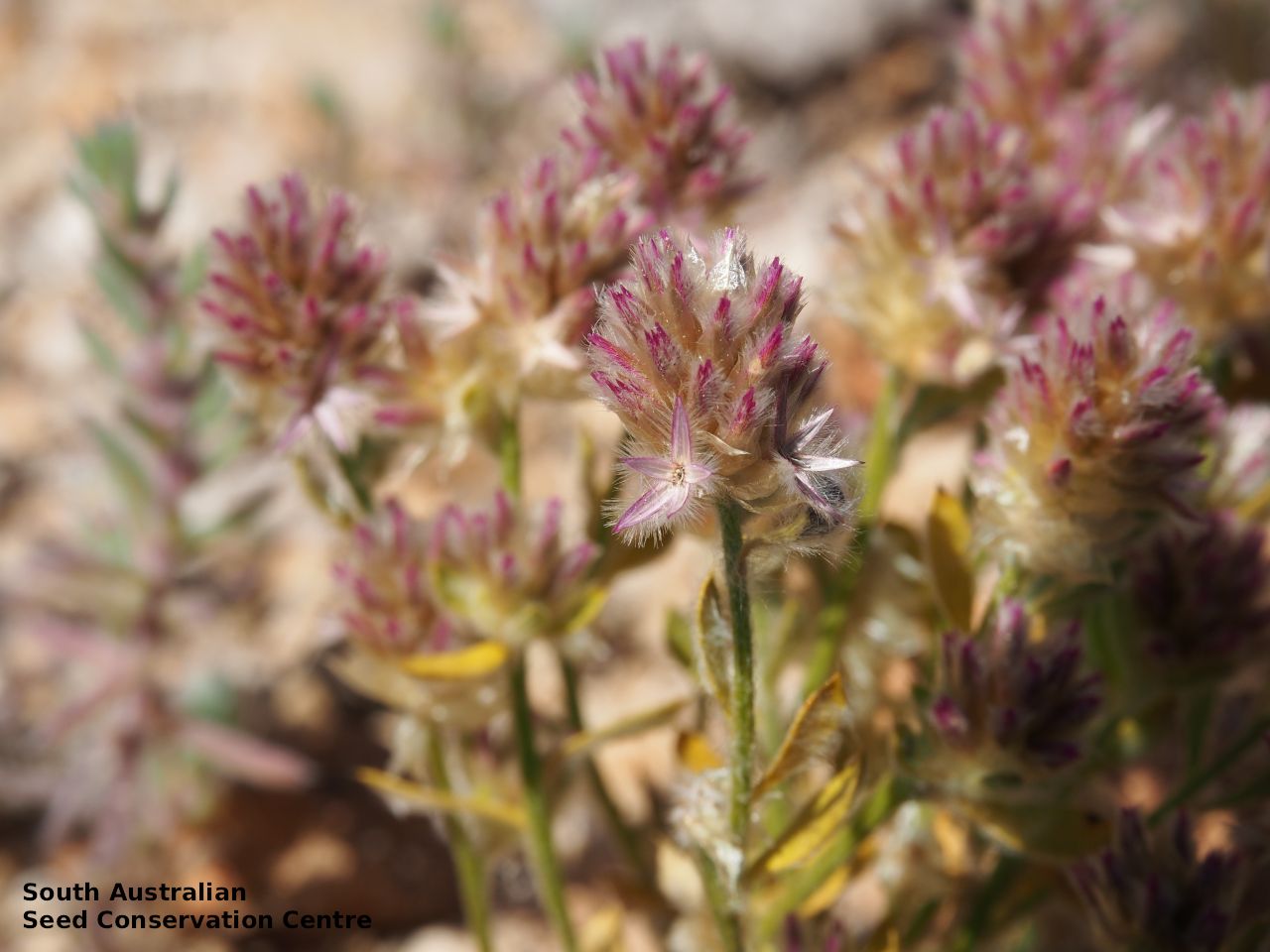
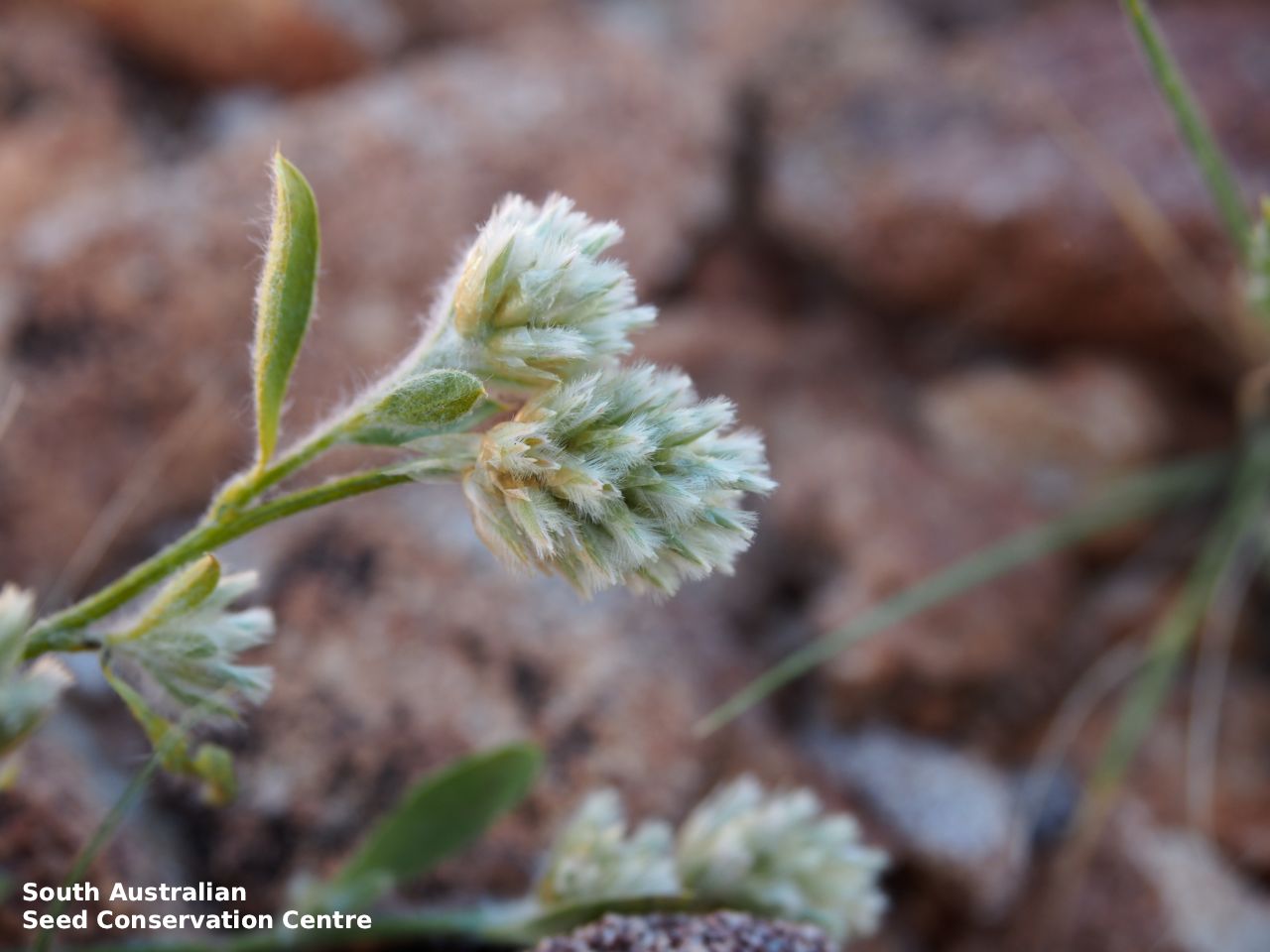
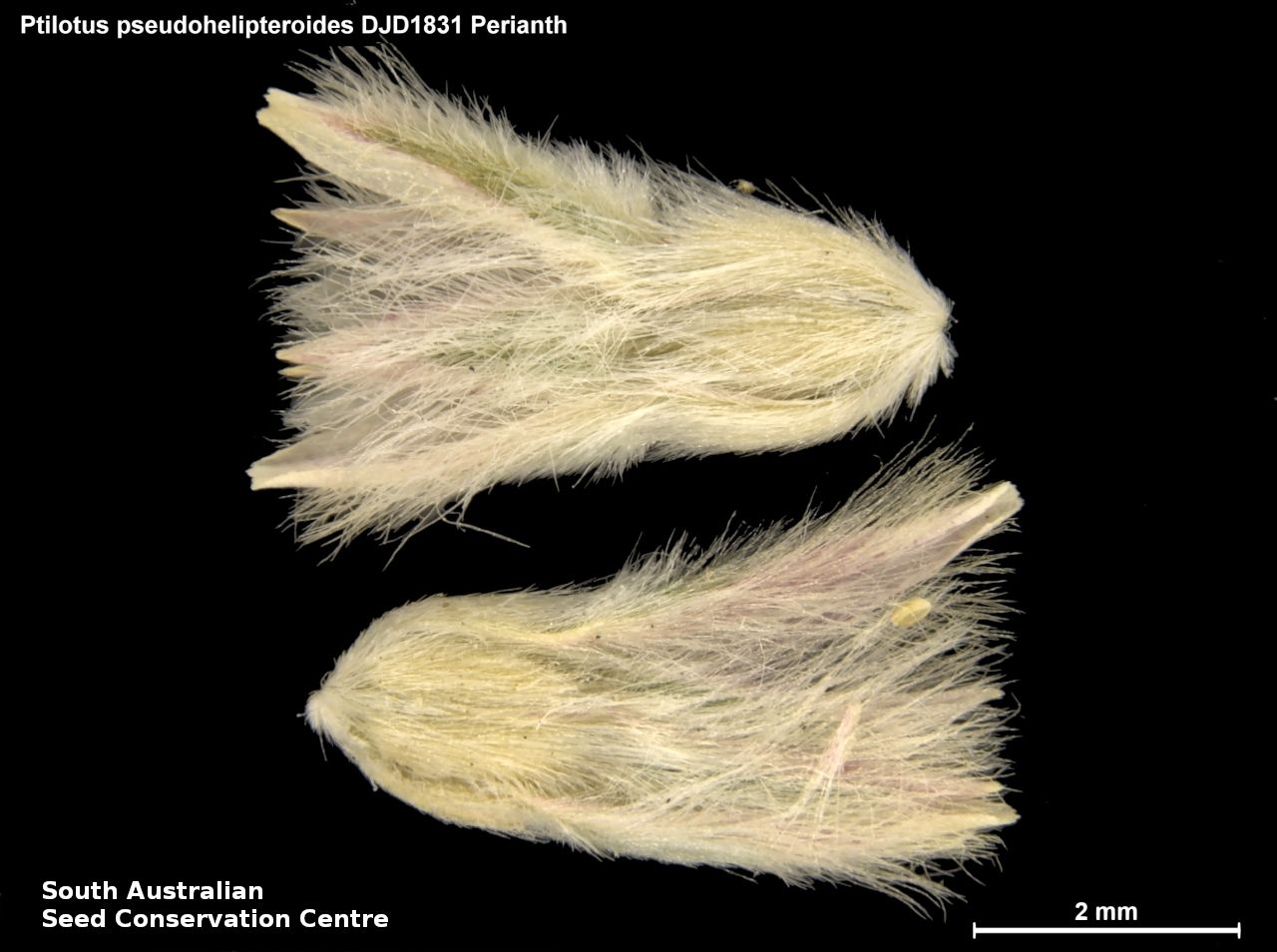

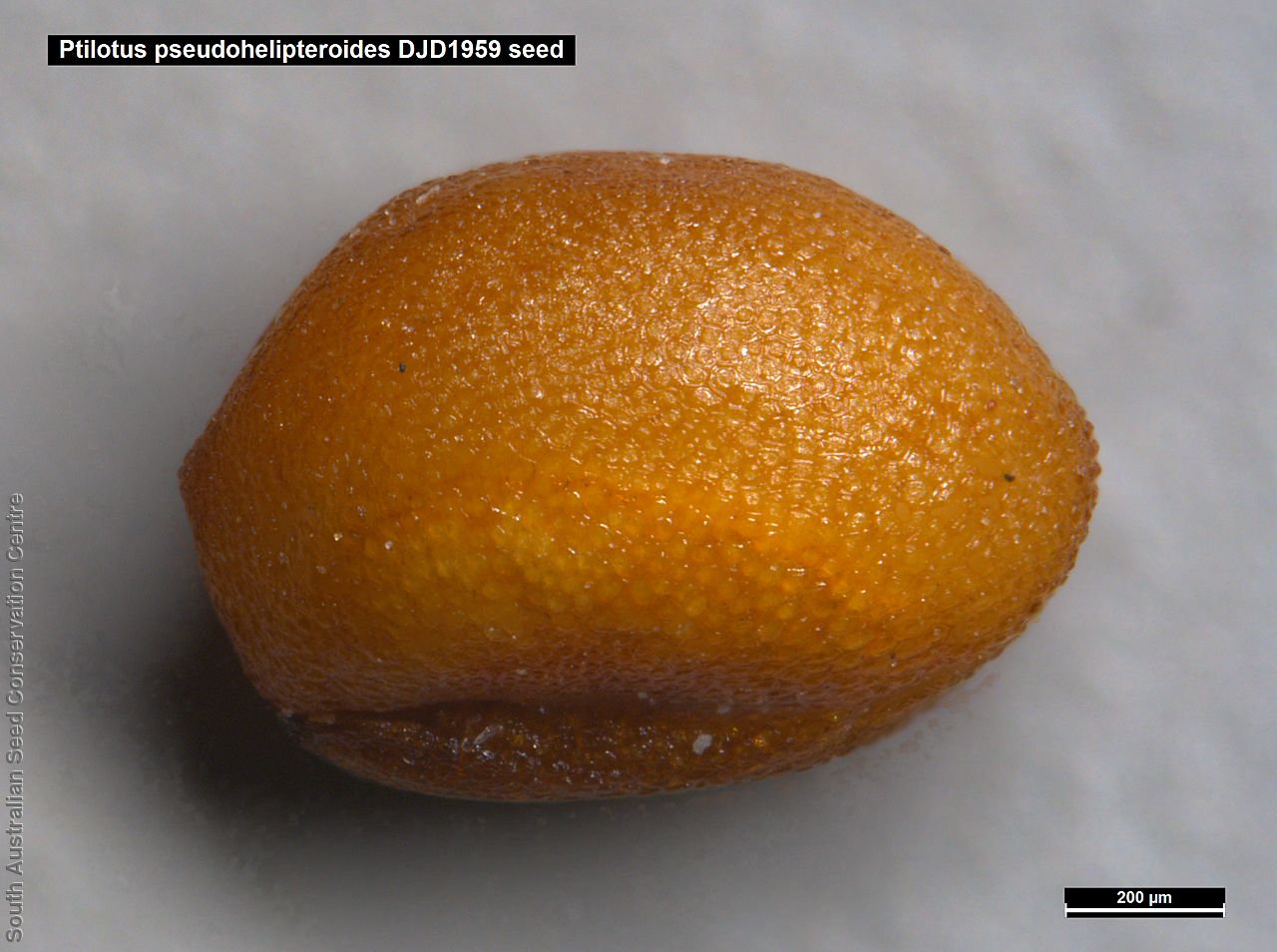
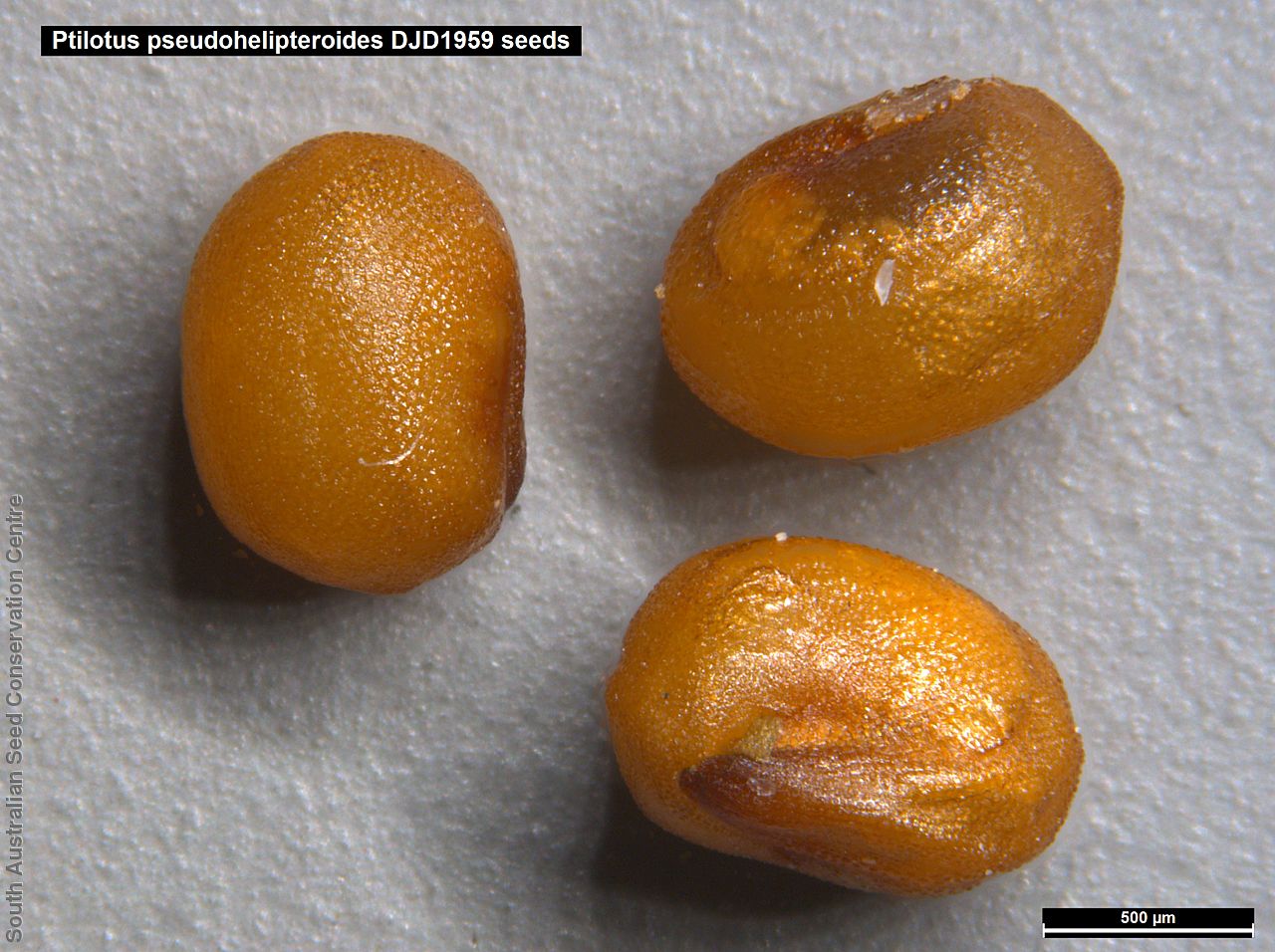

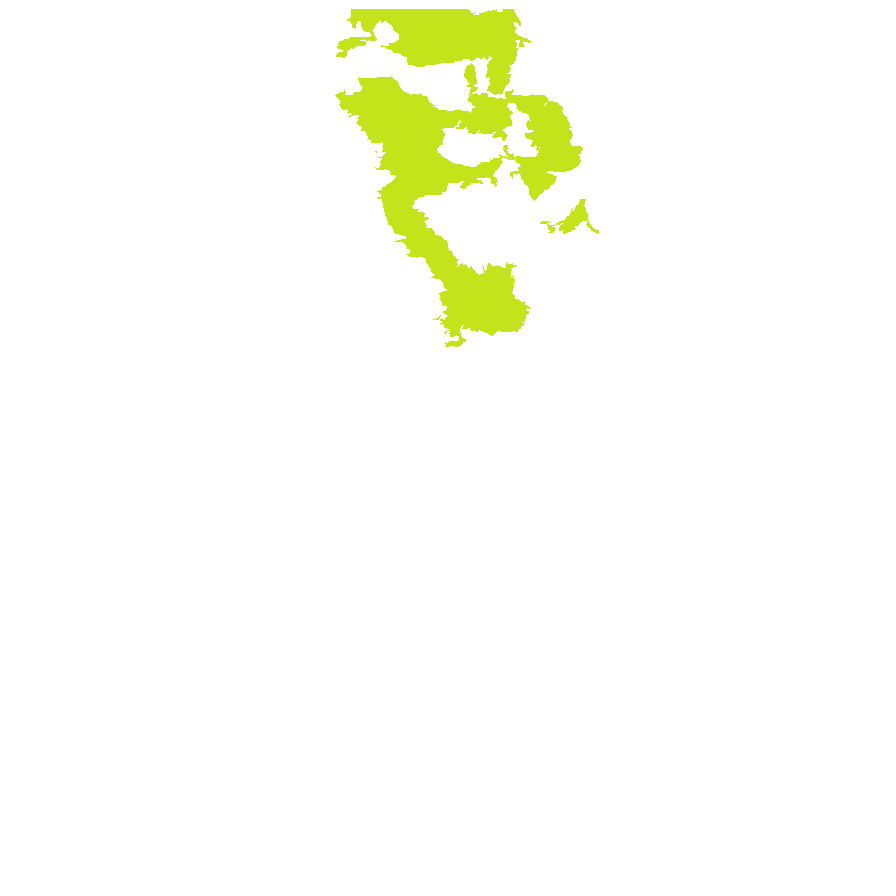
Prior names
Ptilotus helipteroides var. minor
Ptilotus helipteroides var. minor, nom.inval.
Trichinium helipteroides var. minor
Common names
Woolly Mulla Mulla
Hairy Mulla Mulla
Woolly Tails
Etymology
Ptilotus from the Greek 'ptilotos' meaning feathered or winged; referring to the hairy flowers. Pseudohelipteroides from the Greek 'pseudo' meaning false and Helipteroides means resembling the genus Helipterum; referring to the species false resemblance of Helipterum.
Distribution and status
Found in the north central part of South Australia, growing in flats, gravelly rises and jump-ups. Also found in Western Australia, Northern Territory and Queensland. Native. Uncommon South Australia. Uncommon in Western Australia and Queensland. Common in Northern Territory.
Herbarium regions: Lake Eyre, Eastern
NRM region: South Australian Arid Lands
AVH map: SA distribution map (external link)
Plant description
Small erect or prostrate annual herb to 20 cm tall. Leaves to 3 cm long and 0.5 cm wide. Flower-spikes subglobose to ovoid, to 1.5 cm long and 1.2 cm with pink-purple flowers. Flowering between April and October. Fruits are white to creamy, ovoid head containing numerous long papery and hairy fruits, each containing one seed. Seeds are small orange-brown reinform seed to 1.1 mm long and 0.8 mm wide. Seed embryo type is peripheral.
Seed collection and propagation
Collect seeds between October and January. Be very careful when collecting this species as the fruits contain fine hairs that may cause an allergic reaction for some people. Collect the fruit heads when dried to a pale straw/pinkish colour. Each fruit should come off the head easily when fingers are rubbed up the stem. Collect more fruits than required as not all fruits contain viable seed. Be very careful when cleaning this species as the fruits contain fine hairs that may cause an allergic reaction for some people. To clean, rub the fruit heads gently to dislodge the seed at the base of each fruit. Use a sieve to separate the unwanted material. Store the seeds with a desiccant such as dried silica beads or dry rice, in an air tight container in a cool and dry place. From one collection, the seed viability was average, at 75%. Seeds are non-dormant, viable seed should germinate readily.
| Location | No. of seeds (weight grams) | Number of plants | Date collected | Collection number Collection location | Date stored | % Viability | Storage temperature |
|---|---|---|---|---|---|---|---|
| BGA | 3,500 (1.54 g) | 50+ | 4-Dec-2010 | DJD1959 Lake Eyre | 1-Jan-2012 | 75% | -18°C |
Number of plants: This is the number of plants from which the seeds were collected.
Collection location: The Herbarium of South Australia's region name.
% Viability: Percentage of filled healthy seeds determined by a cut test or x-ray.